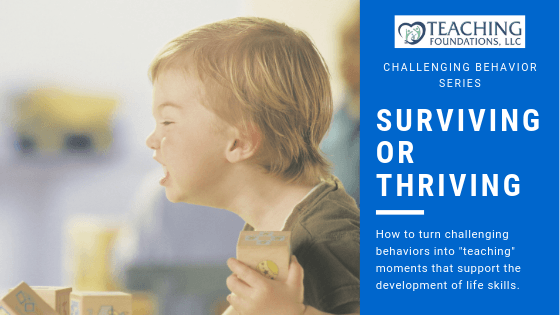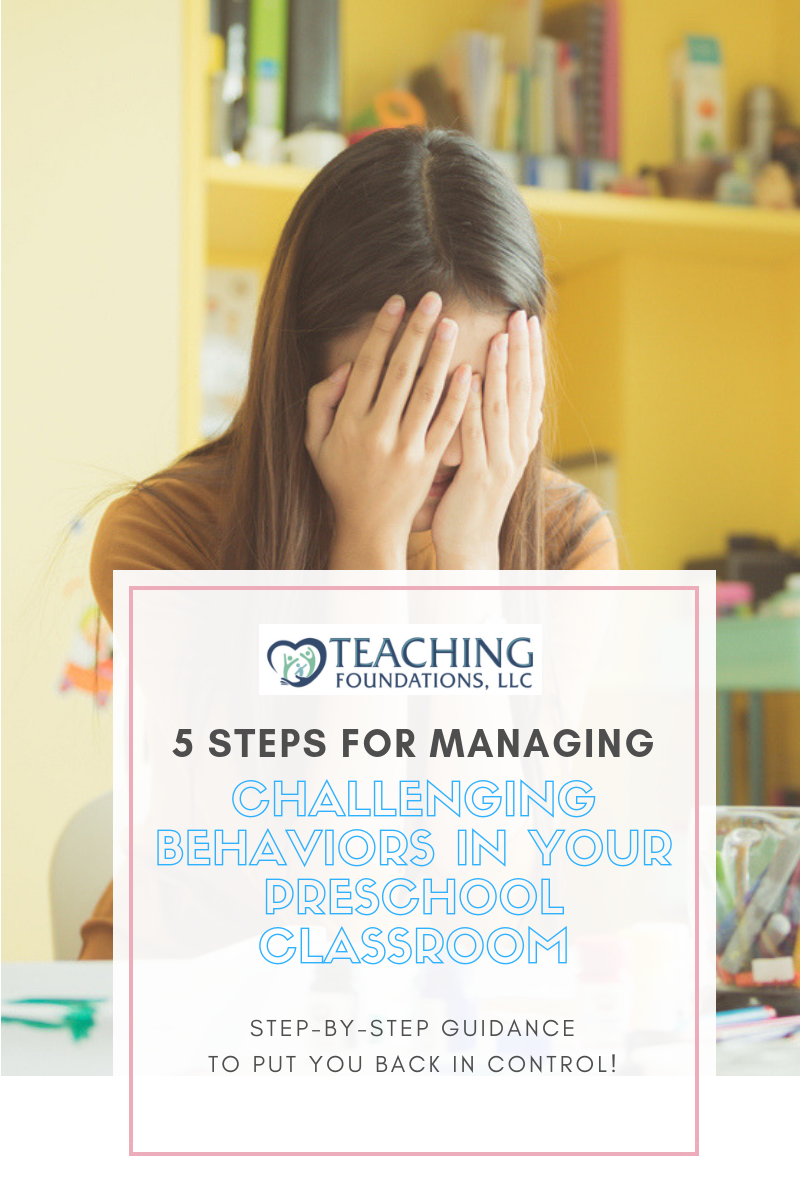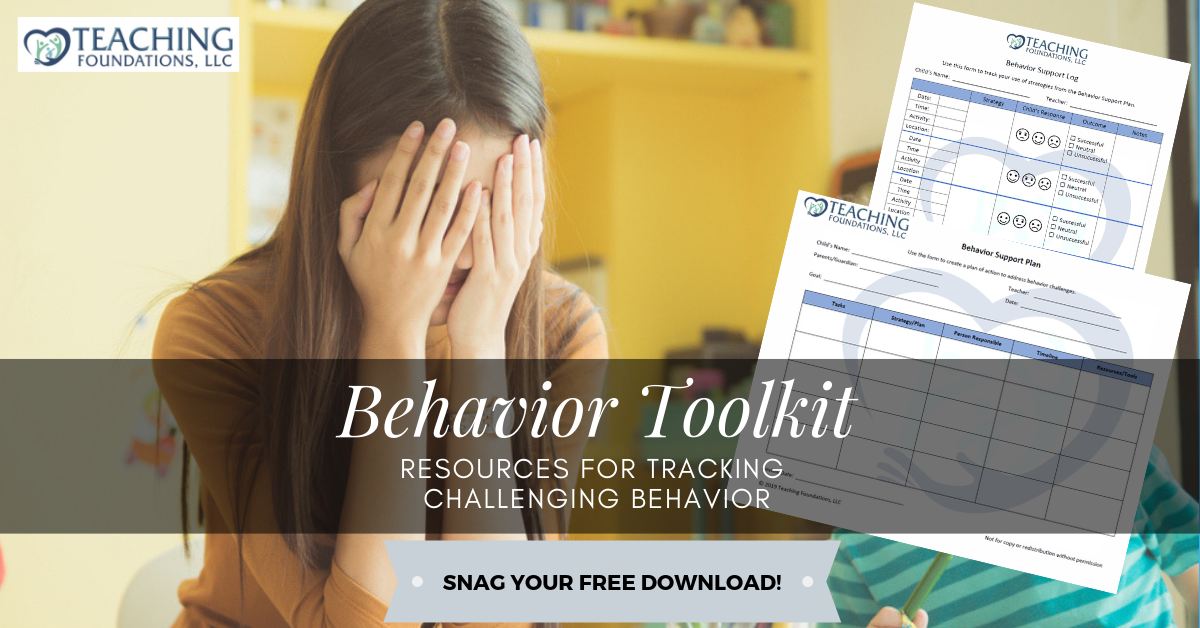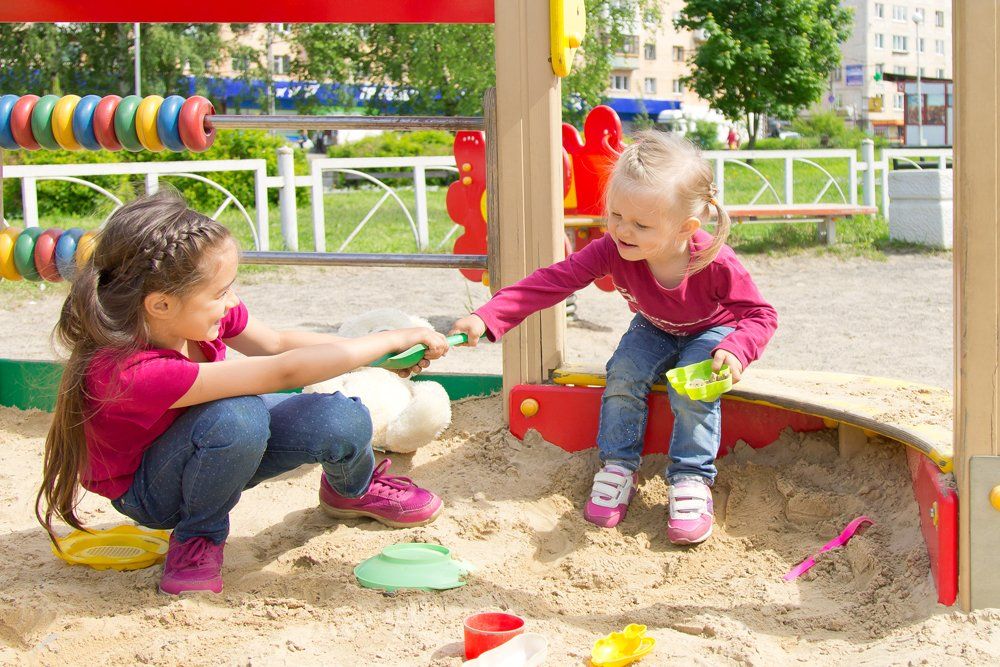Partnering with the Families
6 Tips for Working with Families of Children with Challenging Behaviors
When you’re working with children with challenging behaviors, it is important to establish strong working partnerships with the families. By having everyone on the same page, you ensure that everyone is working toward the same goals. This increases your chances of a successful outcome for the child.
However, a common challenge when I talk to preschool teachers is building partnerships with families. Many teachers state that they don’t know what to say or how to say what is happening when communicating with families. Others state that parents will say, “I don’t see that at home”, leaving the teacher to feel unsupported by the parents in finding a solution for the challenging behavior.
In this article, I wanted to share with you 6 tips for building strong partnerships with the families in your program.
Tip 1: Be open-minded
When forming a partnership with families, it is important for teachers to listen to parents and learn about the child’s home experiences, as this provides a window into understanding the complete child.
Tip 2: Find the appropriate place
Knowing when and where to communicate with families is critical to forming strong partnerships. Where would you want to be told something potentially “embarrassing” or “unflattering” about yourself? In my experiences, teachers will often communicate with families about their child’s behavior during drop off and pickup times. This may not be the best time, especially if there are other parents around to overhear. Another reason that makes this time challenging for communication is that parents are often rushing and unable to give the conversation their full attention, as needed for challenging behaviors.
I always encourage my teachers to schedule time to sit down and talk with the parents. This should be a time that works with everyone’s schedule and allows time for the depth of conversation needed. These conversations should not occur during parent-teacher conferences unless it has been previously discussed with the parents. Blindsiding parents with information in this context will create a sense of mistrust and defensiveness on the side of the parents. Parents should be aware of the topic to be discussed and the meeting should have a focus of finding solutions and gathering information, not placing blame.
Tip 3: Work from a strength-based perspective
Everyone has strengths and things that are good about them. This is often forgotten when working with children with challenging behaviors. We “see” the behaviors and remember how the behavior impacted our day, routines, and activities. The child becomes defined by his behavior. This is one reason why I encourage teachers to use frequency charts to note how often an incident of challenging behavior occurs. It can really put the perception that the child is always “misbehaving” in perspective.
Just as we notice the challenging incidents, we should also notice the times the child “waited” his turn, asked for a toy, or offered a crying friend a hug. We should reinforce these behaviors by sharing them with the families and communicating about them to understand what makes these times run smoothly. Here is a great video to illustrate my point:
By acknowledging children’s strengths and sharing them with families, you create trust with the families because they come to know that you care for their child and have his best interest in mind. Once they trust you, they are more willing to listen to you, take your advice, and work with you to find solutions to best help the child.
Tip 4: Have resources and information available
In my article, 5 Step Process for Managing Challenging Behaviors , I mentioned that parents often do not have the training and experience that teachers have and may rely on the teacher for guidance with managing behavior. Thus, it’s important to have resources and strategies available to offer families, in case they ask for more information.
The Center on the Social and Emotional Foundations for Early Learning (CSEFEL) and the National Center for Pyramid Model Innovations , have amazing information, resources, tools, and articles you can share with families. Articles available on these websites cover topics ranging from biting, responding to aggressive behavior, building relationships, and teaching friendship skills, among others. They also offer many teaching tools you can use in your classroom, including social stories, visual supports (first-then chart/visual individual schedules), and behavior observations tools. I use these websites to find articles or videos about behaviors to share with families. By providing families with this information, you are sharing with them the knowledge that you have learned and providing them with an opportunity to become an active participant in addressing their child’s challenging behaviors.
Remember, parents know their child (they’ve been with them since birth), teachers know children (education/experience). Everyone has information to contribute that will lead to the best plan of action for addressing the challenging behavior.
Tip 5: Listen to the family's perspective
When you are working with a child demonstrating challenging behaviors, you can ask the family for their insights, the child’s previous experiences with group care, and strategies that have been tried in the past. Download our Questions to Ask Families resource available above! By listening to families, you send the message that you view them as a partner in supporting their child’s learning and development. Additionally, parents take their role in the implementation of the child’s behavior support plan more seriously when they are a part of the planning and information gathering process.
Tip 6: Be patient!
When I
was studying clinical psychology, there was this phrase, “a parent has to hear
a diagnosis three times before they accept it as true.” This means that if parents are hearing about
their child’s behaviors for the first time, there will be denial and resistance
initially. Parents will need time to
process the information and their feelings about the information before being
able to move forward.
Ray,
Pewitt-Kinder, and George (2009) discussed 4 Stages of Adjustment
for parents
of children with special needs. I think
these same phases apply to parents of children with challenging behaviors. The phases are as follows:
- The ostrich phase : Parents do not realize the impact of their child’s challenging behaviors. These are parents who minimize the child’s behavior by explaining it. For example, you may hear parent’s comment, “She’s just getting used to her environment” or “I did that when I was younger”. In this phase, two-way communication is important, as you are building trust with the family.
- Special designation phase
: Parents start to understand that their child
needs more support and seek out resources and support with managing
behaviors. When parents reach this
phase, it is important to have resources available, as discussed earlier.
- Normalization phase : Parents try to minimize the differences between their children and same-age peers. Parents may comment about other children exhibiting the same behaviors, “Everyone’s hitting in here.” Parents may also comment that evaluations found “nothing wrong”. Just like in the ostrich phase, two-way communication is important! You also want to ensure that you are communicating children’s strengths, as well as challenges in this phase.
- Self-actualization phase : Parents come to understand that the child’s behavior does not make him better or worse than other children. Parents are supportive of attempts to “teach” their child necessary social skills. Parents become true partners in finding solutions and strategies that are best for their child.
Just like when working with the children, there are no quick fixes for building strong partnerships with families. In my experience, the more welcoming you are to the families’ perspectives and suggestions, the more families trust you when giving guidance and suggestions.
Do you have experiences using any of these tips when working with families? What strategies have worked best for you? Looking forward to hearing your comments and feedback below!
Do you have a process for addressing challenging behaviors in your early childhood program? Our live, instructor-led virtual training, Breaking the Behavior Code: Discovering the "Why" Behind Challenging Behaviors will teach you our 5-step process. Sessions running in September and October.















